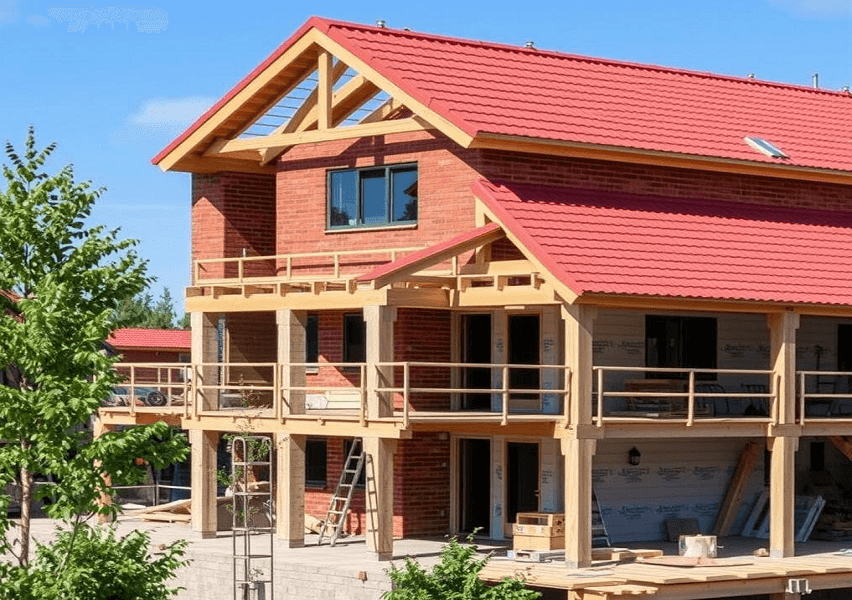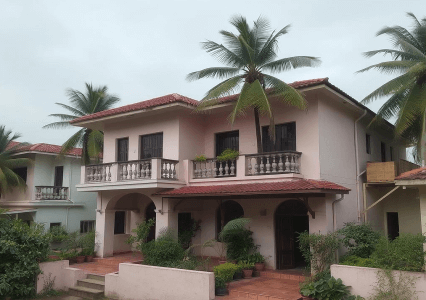
Sustainable construction practices are becoming increasingly important as the world grapples with environmental challenges like climate change, resource depletion, and pollution. These practices focus on minimizing the environmental impact of buildings and construction processes while enhancing the well-being of occupants.
Here are some key green building materials and techniques that are central to sustainable construction:
- GREEN BUILDING MATERIALS
- Recycled and Reclaimed Materials: Using materials that have been recycled or reclaimed, such as recycled steel, reclaimed wood, or crushed concrete, reduces the demand for new raw materials and minimizes waste.
- Bamboo: Bamboo is a rapidly renewable material that is often used as an alternative to traditional wood. It’s strong, lightweight, and can be harvested sustainably.
- Insulating Concrete Forms (ICFs): ICFs are forms for poured concrete walls that remain in place as permanent building insulation for energy-efficient, durable, and disaster-resistant structures.
- Low-VOC Materials: Materials with low volatile organic compound (VOC) content improve indoor air quality by reducing harmful emissions. This includes low-VOC paints, adhesives, and sealants.
- Sustainably Sourced Wood: Certified by organizations like the Forest Stewardship Council (FSC), sustainably sourced wood is harvested in ways that preserve the health of forests and ecosystems.
- Green Insulation: Insulation materials made from recycled content, such as cellulose insulation made from recycled paper or denim insulation made from recycled cotton, offer energy efficiency with a reduced environmental footprint.
- GREEN BUILDING TECHNIQUES
- Passive Solar Design: This design technique involves orienting buildings and windows to maximize natural heating from the sun in the winter and shading to reduce heat gain in the summer. It reduces the need for artificial heating and cooling.
- Rainwater Harvesting: Collecting and storing rainwater for non-potable uses, such as irrigation and toilet flushing, reduces the demand on municipal water supplies.
- Green Roofs and Walls: These features involve the installation of vegetation on roofs or walls, which helps to insulate buildings, reduce the urban heat island effect, and improve air quality.
- Energy-Efficient Windows: Double or triple-glazed windows, low-emissivity coatings, and well-insulated frames help reduce energy loss and improve overall energy efficiency.
- Daylighting: Maximizing the use of natural light through strategically placed windows, skylights, and reflective surfaces reduces the need for artificial lighting and energy consumption.
- Geothermal Heating and Cooling: This technique uses the stable temperatures of the earth to heat and cool buildings, significantly reducing energy consumption.
- Waste Reduction: Sustainable construction practices emphasize waste reduction through on-site recycling of construction debris, precise material ordering, and modular construction techniques that minimize material waste.
- BENEFITS OF SUSTAINABLE CONSTRUCTION
- Environmental Impact: Sustainable construction reduces carbon emissions, conserves natural resources, and minimizes waste, contributing to a healthier environment.
- Economic Advantages: Green buildings often result in lower operating costs due to energy efficiency, water savings, and reduced maintenance requirements. They may also have higher property values and attract environmentally conscious tenants or buyers.
- Health and Well-being: Improved indoor air quality, natural lighting, and the use of non-toxic materials contribute to the health and comfort of building occupants.
Conclusion: Sustainable construction practices, through the use of green building materials and techniques, are essential for reducing the environmental impact of the construction industry. By integrating these practices, builders and developers can create structures that are not only eco-friendly but also economically viable and healthy for occupants.


